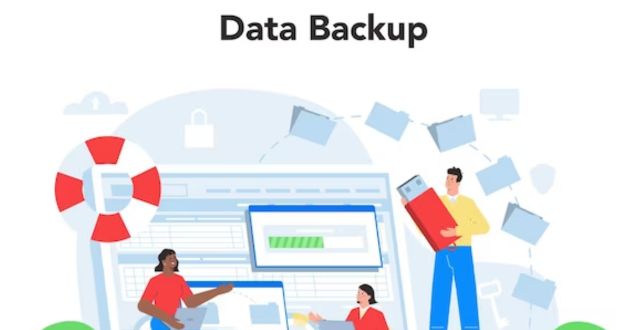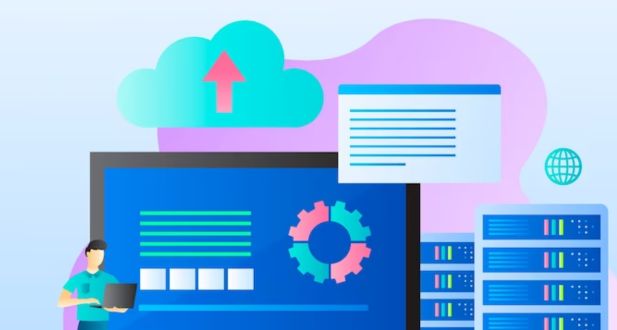Data Backup and Recovery for Google Workspace
In the digital age, data is the lifeblood of businesses. Whether you’re a small startup or a multinational corporation, your data is invaluable. Losing access to critical business information can lead to a myriad of issues, from financial losses to damaged reputations. Therefore, data backup and recovery for Google Workspace is of paramount importance. In this comprehensive guide, we will explore the significance of data backup and recovery, the challenges associated with Google Workspace, and the best practices to ensure your business’s data is secure and recoverable.
Before delving into the intricacies of data backup and recovery, it’s essential to understand the foundation of your data management ecosystem. Google Workspace is a suite of cloud-based productivity tools, including Gmail, Google Drive, Google Docs, Google Sheets, and more. It enables seamless collaboration, flexibility, and accessibility, making it a popular choice for businesses of all sizes. However, its cloud-based nature brings both advantages and challenges when it comes to data security.
The Advantages of Google Workspace
Google Workspace has become an indispensable resource for businesses, educational institutions, and individuals alike, offering a wide range of advantages that enhance collaboration, productivity, and efficiency. In this essay, we will explore the numerous advantages of Google Workspace, highlighting its impact on communication, collaboration, security, flexibility, and cost-effectiveness.
-
Seamless Communication:
One of the primary advantages of Google Workspace is its seamless communication tools. Gmail, the popular email platform, is a cornerstone of this suite. It offers a professional email address with your custom domain, which not only enhances your brand image but also establishes trust among clients and partners. Gmail’s user-friendly interface and powerful spam filters ensure a smooth email experience, with features like conversation threading and labels to help manage emails efficiently.
Beyond email, Google Workspace includes Google Chat and Google Meet. Google Chat provides a platform for real-time messaging, fostering quick and efficient communication within teams. Google Meet facilitates video and audio conferencing, enabling face-to-face meetings and presentations, all integrated seamlessly into your Google Workspace environment.
2. Collaborative Tools:
Google Workspace excels in fostering collaboration among users. Google Docs, Google Sheets, and Google Slides are cloud-based applications that allow multiple users to work on documents simultaneously. This real-time collaboration simplifies teamwork and eliminates version control issues. Users can leave comments, suggest edits, and track changes, promoting effective collaboration in both professional and educational settings.
Moreover, Google Workspace simplifies file sharing and storage with Google Drive. Users can store documents, images, videos, and other files in the cloud and easily share them with others, granting various levels of access, from view-only to full editing permissions. The ability to access and edit files from any device with an internet connection ensures that work is not tied to a single location.
3. Enhanced Productivity:
Google Workspace offers a wide array of features that boost productivity. Google Calendar assists users in organizing their schedules, setting up appointments, and coordinating events. It can even integrate with Gmail, making it easier to manage meetings and deadlines.
The suite also features Google Forms, which allows users to create surveys, questionnaires, and feedback forms. This tool is valuable for gathering data and opinions from various sources, whether for market research, academic purposes, or internal feedback.
Additionally, Google Workspace includes tools like Google Sites for creating and hosting websites, Google Keep for note-taking and task management, and Google Tasks for tracking to-do lists. All these applications are interconnected, contributing to a cohesive productivity ecosystem that enhances efficiency and organization.
4. Security and Data Protection:
Security is paramount in today’s digital landscape, and Google Workspace is designed with robust security measures. Google provides extensive safeguards to protect user data, including encryption in transit and at rest. Two-factor authentication (2FA) is available to add an extra layer of security to user accounts.
Moreover, Google Workspace allows administrators to set user permissions and access controls, ensuring that sensitive data is only available to authorized personnel. The suite also features an alert system that notifies administrators of any suspicious activities, enabling quick responses to potential security threats.
Data loss prevention (DLP) features in Google Workspace help organizations prevent the unintentional sharing of sensitive information. Admins can establish policies to prevent data leaks and monitor user activities to ensure compliance with security regulations and organizational policies.
5. Flexibility and Accessibility:
Google Workspace is known for its flexibility. It is compatible with a wide range of devices, including Windows, macOS, Android, and iOS, ensuring that users can access their work from virtually anywhere. This level of accessibility is invaluable for remote and mobile work, allowing users to be productive on the go.
Furthermore, Google Workspace is scalable, making it suitable for businesses of all sizes. Small startups and large enterprises alike can benefit from its range of services, with customizable plans that cater to specific needs. This adaptability is particularly advantageous for businesses experiencing growth or fluctuations in their workforce.
6. Cost-Effective Solutions:
Google Workspace offers cost-effective solutions for both businesses and individuals. The suite operates on a subscription model, with various pricing tiers to suit different requirements. This eliminates the need for upfront investments in hardware and software, as everything is hosted in the cloud. It also simplifies budgeting, as organizations can predict their monthly or annual expenses with precision.
In addition to cost savings, Google Workspace reduces the burden of IT maintenance. Google manages the infrastructure, updates, and security, allowing organizations to focus on their core activities rather than managing software and hardware. This is particularly valuable for small businesses that lack the resources for extensive IT support.
7. Integrated Ecosystem:
Google Workspace offers an integrated ecosystem that seamlessly connects all of its applications and services. This integration enhances user experience by allowing users to navigate between different tools without friction. For example, you can easily attach Google Drive files to an email in Gmail, or schedule a meeting in Google Calendar while chatting in Google Chat.
The tight integration of Google Workspace tools leads to greater efficiency and productivity. Users can spend less time switching between different applications and more time focused on their tasks.
8. Easy Collaboration with External Parties:
Google Workspace simplifies collaboration with external parties, such as clients, partners, and vendors. Sharing documents and files with external users is straightforward, even if they don’t have a Google account. You can set permissions to allow external users to view or edit specific documents, making it easy to work on projects with stakeholders outside your organization.
9. Extensive Add-Ons and Marketplace:
Google Workspace offers a marketplace with numerous add-ons and extensions, enhancing the functionality of its core applications. These add-ons allow users to integrate third-party services, extend features, and customize their workspace to better suit their needs. For example, you can add project management tools, CRM systems, and email marketing integrations to enhance your productivity within the suite.
10. Regular Updates and Improvements:
Google is known for its commitment to continuous improvement. Users of Google Workspace benefit from regular updates and feature enhancements. This ensures that the suite remains up-to-date and competitive in the rapidly evolving digital landscape. Users can take advantage of new features and improvements without the need for manual updates or additional costs.
Google Workspace is a versatile and powerful suite of cloud-based productivity tools that offers numerous advantages to individuals, businesses, and educational institutions. Its seamless communication, collaborative features, productivity tools, security measures, flexibility, cost-effectiveness, integrated ecosystem, and continuous improvements make it an indispensable resource in today’s digital world. As businesses and individuals increasingly rely on cloud-based solutions for their daily work, Google Workspace continues to provide a robust and comprehensive platform for all their productivity and communication needs.
The Challenges of Google Workspace
In an age where remote work and collaboration have become the norm, Google Workspace, formerly known as G Suite, has emerged as one of the most popular and powerful cloud-based productivity and collaboration platforms. While Google Workspace offers a wide array of tools and features to enhance communication and productivity, it is not without its challenges. In this comprehensive discussion, we will delve into the complexities and difficulties that organizations and users face when using Google Workspace.
I. The Ever-Changing Landscape of Google Workspace
Google Workspace, like any other technology, is subject to constant updates and changes. While this is often seen as an advantage, it can also be a significant challenge. Frequent updates mean that users need to adapt to new features and interfaces regularly. This can be particularly challenging for organizations with a large user base, as they must ensure that their employees remain up to date with the latest changes.
Google Workspace’s iterative approach to development is driven by the need to remain competitive in the ever-evolving technology landscape. The challenge for users and administrators is to keep pace with these changes and ensure that they are implemented effectively across their organizations. Failing to do so can result in productivity losses, confusion, and potential security vulnerabilities.
II. Integration and Compatibility Issues
Google Workspace offers a suite of tools, including Gmail, Google Drive, Google Docs, Google Sheets, Google Slides, and many more. While these tools are highly functional and offer a wide range of features, integrating them with other software and platforms can be a significant challenge. This is especially true for organizations that rely on a mix of cloud-based and on-premises solutions.
Many businesses use third-party applications and services to manage specific aspects of their operations, such as customer relationship management (CRM) software, project management tools, and accounting systems. Ensuring that these tools work seamlessly with Google Workspace can be a complex and time-consuming endeavor. Integration issues may lead to data inconsistencies, increased manual data entry, and inefficient workflows.
Additionally, Google Workspace may not always be compatible with certain file formats, which can hinder document sharing and collaboration with users outside the Google ecosystem. Converting files to and from Google formats may result in formatting and content loss, making it a constant challenge for users to maintain document integrity when collaborating with external parties.
III. Data Security and Privacy Concerns
One of the most significant challenges organizations face with Google Workspace is data security and privacy. When organizations store their data in Google’s cloud, they are entrusting a third party with sensitive information. While Google has robust security measures in place, organizations must take additional steps to secure their data and comply with data privacy regulations.
Google Workspace offers a range of security features, such as two-factor authentication, data loss prevention, and encryption. However, organizations must ensure these features are correctly configured and enforced. This requires a deep understanding of the platform and ongoing monitoring to identify and address security threats.
Furthermore, compliance with data privacy regulations, such as the General Data Protection Regulation (GDPR) in Europe and the Health Insurance Portability and Accountability Act (HIPAA) in the United States, is an ongoing challenge. Organizations that handle personal and sensitive data must navigate a complex web of regulations and ensure that their use of Google Workspace aligns with these legal requirements.
IV. User Training and Adoption
The success of any technology platform within an organization depends on user adoption. Google Workspace is no exception. Getting employees to embrace and effectively use the suite of tools can be a significant challenge. Users often resist change and may be more comfortable with legacy software, leading to resistance and inefficiency.
To address this challenge, organizations must invest in training and change management programs to help users transition to Google Workspace smoothly. Training should encompass not only the technical aspects but also the benefits and real-world applications of the platform. Encouraging and incentivizing users to embrace the new tools can help drive adoption.
Furthermore, user adoption is an ongoing process. As Google Workspace evolves, organizations must continually educate their workforce on new features and best practices. Neglecting this aspect can result in underutilized tools and a failure to realize the full potential of the platform.
V. Cost and Licensing Complexities
While Google Workspace is praised for its cost-effective pricing model, it can also pose challenges for organizations. The licensing and pricing structures can be complex, especially for large enterprises with numerous users and varied needs.
Organizations must carefully assess their requirements to select the appropriate licensing tier for their users. Failing to do so may result in either overpaying for features and services that are not needed or underestimating the required resources, leading to reduced functionality and productivity.
Moreover, understanding and managing billing and invoicing can be a challenge, particularly for organizations with a decentralized structure or multiple departments. Ensuring that costs are allocated accurately and transparently is crucial for budgeting and financial accountability.
VI. Collaboration and Communication Challenges
Google Workspace is designed to enhance collaboration and communication, but it also presents challenges in this regard. In some cases, overreliance on email, chat, or shared documents can lead to information overload and productivity loss. Users may struggle to prioritize tasks, leading to a lack of focus and efficiency.
Furthermore, managing shared documents and projects can be a challenge when multiple users are involved. Without clear workflows and version control, users can inadvertently overwrite or delete critical information. This can result in frustration and wasted time as users attempt to recover lost work.
Organizations must develop guidelines and best practices for effective collaboration and communication within Google Workspace. This includes setting clear expectations for the use of email, chat, and document sharing, as well as establishing procedures for managing projects and workflows.
VII. Accessibility and Inclusivity
Google Workspace must cater to a diverse user base, including individuals with disabilities. Ensuring that the platform is accessible and inclusive for all users can be a significant challenge. While Google has made efforts to improve accessibility, organizations must also take responsibility for addressing this issue within their specific contexts.
Accessibility challenges include ensuring that documents and content are readable by screen readers, providing alternative formats for individuals with visual impairments, and accommodating users with mobility limitations. Failure to address these concerns not only poses ethical challenges but can also lead to legal repercussions in some jurisdictions.
Organizations should work in tandem with Google Workspace to identify and address accessibility and inclusivity challenges. This may involve the development of accessibility guidelines, training for content creators, and ongoing evaluation of the platform’s accessibility features.
VIII. Scalability and Performance
As organizations grow, they often face challenges related to the scalability and performance of Google Workspace. The platform is designed to handle a vast number of users and data, but managing and optimizing performance for a large, distributed user base can be complex.
Performance issues can manifest as slow loading times, lag in real-time collaboration, and difficulties in searching and accessing data. These challenges can be exacerbated when organizations use a wide range of third-party integrations and applications.
To address these issues, organizations must regularly assess their infrastructure, monitor performance, and implement optimization strategies. This may involve adjusting configurations, optimizing network connectivity, and, in some cases, scaling up resources.
IX. User Account Management
User account management is a fundamental aspect of using Google Workspace effectively, but it can also be a challenge. Organizations must manage user accounts, permissions, and access control to ensure the right people have the right level of access to data and services.
As employees join or leave the organization, user provisioning and de-provisioning can become a complex task. Failing to remove access for departing employees can result in security risks, while inefficient onboarding processes can hinder new employees’ productivity.
Organizations must establish robust user account management processes, including automating user provisioning and deprovisioning, and regularly reviewing access privileges to prevent unauthorized access or data leaks.
X. Data Backup and Recovery
While Google Workspace offers robust data retention and recovery features, organizations should not rely solely on these built-in capabilities for data protection. Unexpected data loss, accidental deletion, or data corruption can occur, and without proper backup and recovery strategies, organizations may face data loss and operational disruptions.
Challenges in data backup and recovery include setting up regular backups, ensuring data is securely stored offsite, and having efficient processes for data restoration. Organizations should consider third-party backup solutions or use Google Workspace’s data export options to create additional layers of data protection.
The Significance of Data Backup and Recovery
The significance of data backup and recovery cannot be overstated in today’s digital age. Data is a critical asset for any organization, and its loss can have far-reaching consequences. Let’s delve deeper into the various aspects of why data backup and recovery are so vital:
- Financial Loss: Data loss can result in substantial financial implications for a business. This includes not only the cost of recovering or recreating the lost data but also the potential loss of revenue due to operational downtime. For example, if a company’s IT infrastructure fails or data is lost, it can disrupt sales, customer service, and overall business operations, leading to significant financial setbacks.
- Reputational Damage: Data breaches and data loss can inflict lasting damage on a company’s reputation. When customers and clients entrust their data to an organization, they expect it to be handled with care and protected from unauthorized access. If data is lost or exposed, it erodes the trust and confidence of customers and can lead to a tarnished reputation. Rebuilding trust can be a long and arduous process.
- Legal and Compliance Issues: Data loss can result in legal and compliance problems, especially in industries subject to stringent data protection and privacy regulations (e.g., GDPR, HIPAA). Failing to comply with these regulations can result in hefty fines and penalties, further exacerbating the financial consequences of data loss. Companies may also be required to notify affected individuals, which can add to legal and operational challenges.
- Operational Disruption: Data loss can disrupt day-to-day business operations. Access to critical information may be impaired, leading to a decline in productivity. Decision-making processes may be hindered, and employees might find it challenging to perform their tasks efficiently. This operational disruption can have cascading effects on various aspects of the organization.
- Competitive Disadvantage: In a competitive business landscape, downtime and data loss can put a company at a significant disadvantage. Competitors with robust data backup and recovery strategies in place are more resilient to disruptions and can maintain business continuity. They can continue to serve their customers, make informed decisions, and adapt to changes more effectively. This competitive advantage is crucial in industries where agility and responsiveness are paramount.
Data backup and recovery are not just IT best practices; they are fundamental to an organization’s overall health and success. The consequences of not having a reliable data backup and recovery system in place can extend far beyond the immediate data loss, affecting the financial stability, reputation, legal compliance, operational efficiency, and competitiveness of the business. Therefore, investing in data backup and recovery measures is a prudent and essential step for every organization.
Google Workspace Data Backup and Recovery Challenges
Google Workspace, a suite of cloud-based productivity and collaboration tools provided by Google, is widely used by businesses and organizations. While it offers many advantages, such as accessibility and collaboration, it also presents some specific challenges related to data backup and recovery. Businesses need to understand these challenges to ensure comprehensive data protection. Here’s a more detailed description of the challenges mentioned:
-
Limited Data Retention:
Google Workspace has limited data retention policies. This means that deleted data is only recoverable for a short period, typically within 30 days. Beyond this retention period, the data is permanently deleted and cannot be recovered through Google’s built-in recovery tools. This limitation can be problematic if you need to access data that was deleted or lost more than a month ago.
-
Human Error:
Human error is one of the most common causes of data loss within Google Workspace. Users can accidentally delete important files, emails, or other data. They can also make changes to documents or data that lead to irreversible data loss. Since Google’s recovery features can’t prevent such user errors, businesses need a robust backup and recovery strategy to protect against data loss caused by their own employees.
-
Ransomware and Cybersecurity Threats:
Ransomware attacks are a significant concern for businesses using Google Workspace. These malicious attacks can encrypt your data, making it inaccessible to authorized users. Without a backup, businesses may be forced to pay a ransom to cybercriminals to regain access to their data, or they risk losing the data permanently. Having a backup that is not connected to the network and is stored securely can be a lifesaver in such situations.
-
Data Ownership and Control:
Businesses that use Google Workspace may have concerns about data ownership and control. While Google provides robust security measures, businesses are ultimately responsible for their data’s protection. This includes setting access controls, monitoring user behavior, and having a data backup and recovery strategy in place. Understanding the responsibilities and limitations regarding data security is vital to ensure that sensitive or critical data is protected and accessible when needed.
To address these challenges effectively, businesses often employ third-party backup and recovery solutions that provide more comprehensive and customizable data protection. These solutions can extend data retention periods, offer point-in-time recovery options, and ensure data is securely backed up and recoverable even in the face of human error or cybersecurity threats, providing greater peace of mind and data resilience for organizations using Google Workspace.
Best Practices for Google Workspace Data Backup and Recovery
To ensure the security and recoverability of your data in Google Workspace, it’s crucial to implement best practices. Here are some steps you can take:
-
Regular Backups:
Regular backups involve creating copies of your Google Workspace data, such as emails, documents, and calendars, and storing them in a separate, secure location. This is crucial because it provides an extra layer of protection beyond Google’s retention policies. In the event of data loss due to accidental deletion, outages, or other issues, you can restore your information from these backups.
-
Automate Backups:
Manual backups are prone to human error and are often inconsistent. To ensure that no data is missed, it’s best to automate the backup process. Scheduled automated backups run at specified intervals, reducing the risk of data loss by consistently creating copies of your data.
-
Data Retention Policy Management:
Google Workspace has its own data retention policies, which can vary depending on the specific service or plan. To align these policies with your business needs, regularly review and adjust them. This prevents data from being automatically and permanently deleted, ensuring that you have access to critical information when necessary.
-
Educate Users:
User education is a critical component of data protection. Train your team to understand the importance of data backup and how to use Google Workspace without putting data at risk. Encourage best practices such as regularly saving work, using version history, and understanding how to recover deleted items. This empowers users to take responsibility for their data and reduces the likelihood of data loss.
-
Implement Security Measures:
Data backup is just one aspect of data protection. Strengthen your overall cybersecurity measures to safeguard against data breaches and ransomware attacks. This includes:
- Multi-Factor Authentication (MFA): Enforce MFA for Google Workspace accounts to add an extra layer of security. This ensures that even if a password is compromised, unauthorized access is still challenging.
- Strong Passwords: Encourage the use of strong, unique passwords for Google accounts to prevent unauthorized access.
- Security Software: Deploy security software to detect and mitigate threats. This may include antivirus, anti-malware, and intrusion detection systems.
-
Data Recovery Strategies
A robust data recovery strategy is a crucial component of data management and disaster preparedness for any organization or individual. This strategy involves a set of practices and procedures aimed at ensuring that, in the event of data loss, data can be promptly and effectively restored. Let’s dive deeper into the key aspects of a data recovery strategy:
Fast Recovery:
Time is of the essence when it comes to data recovery. The longer you’re without access to your data, the more potential damage can occur. To minimize downtime and mitigate losses, it’s essential to select a backup solution that enables fast and efficient data recovery. This could involve technologies such as incremental backups, cloud-based solutions, or high-speed data restoration mechanisms.
Testing Your Recovery Process:
Having a backup is not enough; you must regularly test your data recovery process to ensure it functions as expected. It’s a common pitfall to assume that your backups are in order, only to discover that they are ineffective when you desperately need them. Routine testing helps identify any weaknesses in your recovery plan and allows you to rectify them proactively.
Prioritizing Critical Data:
Not all data is of equal importance. It’s vital to identify and prioritize critical data that must be restored first in the event of data loss. By doing so, you ensure that essential business operations can resume quickly. This might include customer records, financial data, intellectual property, or any information necessary for day-to-day operations.
Communication Plan:
When a data loss incident occurs, it’s crucial to have a well-defined communication plan in place. This plan should outline how you will inform your team, stakeholders, and possibly even customers about the incident. Communication should be clear, transparent, and provide updates on the progress of data recovery efforts. Being upfront about the situation helps manage expectations and maintain trust.
A data recovery strategy is about being proactive and prepared for the unexpected. It ensures that, in the face of data loss, you can quickly and efficiently restore the information you need to keep your operations running smoothly. This includes selecting the right backup solutions, testing them regularly, prioritizing critical data, and having a communication plan in place to keep all relevant parties informed. With a well-executed data recovery strategy, you can minimize the impact of data loss on your organization and maintain business continuity.
Backup and Recovery Solutions for Google Workspace
To address the challenges of data backup and recovery in Google Workspace, you can explore various third-party solutions specifically designed for this purpose. Some popular options include:
Spanning
Spanning offers automated and secure backup for Google Workspace, with a focus on fast data recovery and advanced security features.
Backupify
Backupify provides comprehensive backup solutions for Google Workspace, including data archiving and disaster recovery capabilities.
SysCloud
SysCloud offers data backup, recovery, and security solutions for Google Workspace, helping businesses protect their data from various threats.
Conclusion
Data backup and recovery are essential components of a comprehensive data management strategy for Google Workspace. By understanding the challenges, implementing best practices, and using reliable backup solutions, businesses can protect their critical data and ensure business continuity. Remember that data is an invaluable asset, and safeguarding it should be a top priority for any organization using Google Workspace.
Google Workspace data can still be vulnerable to data loss due to accidental deletions, user errors, security breaches, and more. Backup ensures data recovery.
Google Vault is primarily for eDiscovery and legal compliance, while Google Workspace backup solutions are focused on data protection and recovery.
Regularly scheduled backups are advisable, depending on your organization’s data change frequency.
Data in the trash bin is not a reliable backup, as Google may delete it after a specific time. It’s better to use backup solutions.
You can back up emails, documents, calendars, contacts, and more within your Google Workspace account.
Yes, most backup solutions allow you to selectively restore specific files or emails.
Data backup solutions for Google Workspace often use encryption and secure data centers to protect your backups.
While specific regulations may not mandate it, it’s advisable to have data backup to meet general data protection requirements.
Retention periods depend on your organization’s policies and regulatory requirements. Some organizations keep backups for several years.
Most backup solutions allow you to access your backups from anywhere with an internet connection.
Yes, many backup solutions offer automated, scheduled backups for convenience.
Typically, you can log in to your backup solution’s dashboard and initiate the restore process from there.
Without a backup, you risk permanent data loss. It’s highly recommended to have a backup in place.
Some backup solutions offer a “sandbox” or test environment where you can verify the recovery process without affecting live data.
While some backup solutions are user-friendly, IT skills can be helpful for configuring and managing backups effectively.
The need for backup exists across all plans, but larger organizations may require more advanced features, which could be available with higher-tier backup solutions.
Some backup solutions may offer integration options with other cloud storage services.
- Digital Marketing Services
- Brand Consultancy
- Website Design Services
- Web Hosting & Domain Registration in India
- Dynamic Website Development
- Website Redesign Service
- Website Maintenance Service
- AMC & IT Support
- Ecommerce Website Design Services
- SSL Certificate (HTTPS)
- Content Writing
- Complete Email Service
- G Suite Services
- Microsoft Office 365 Email Services
- Zoho Email Services
- ERP Bangalore
- Custom Web Application Development
- Mobile App Development and Services
- Android Application Development
- iOS Application Development
- Windows Application Development











